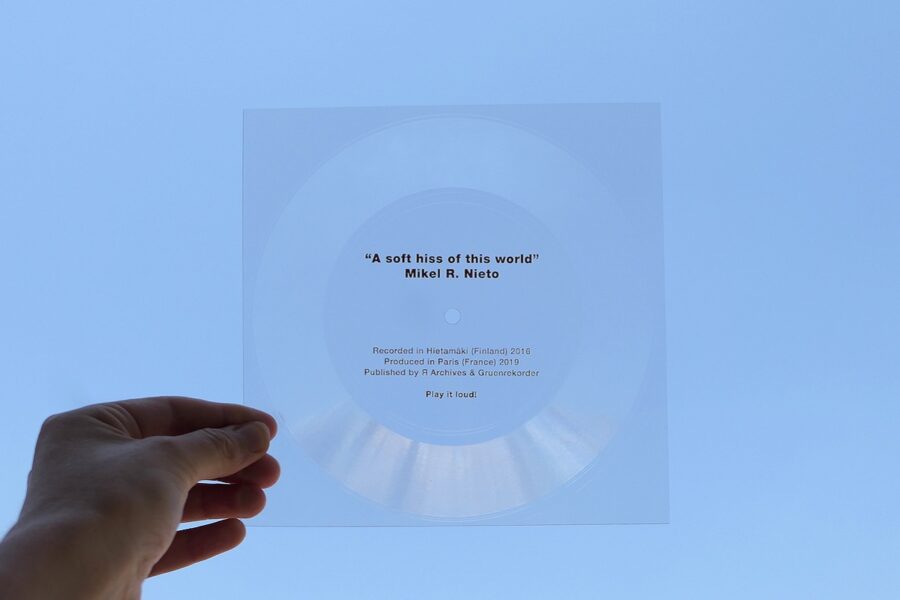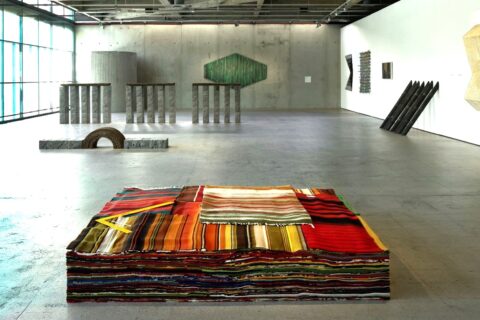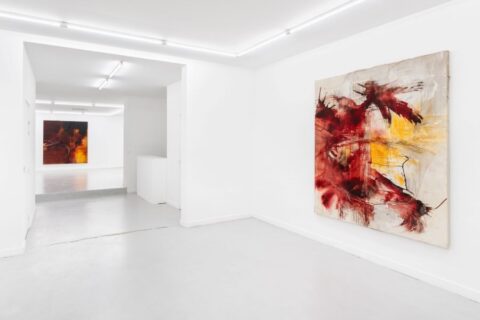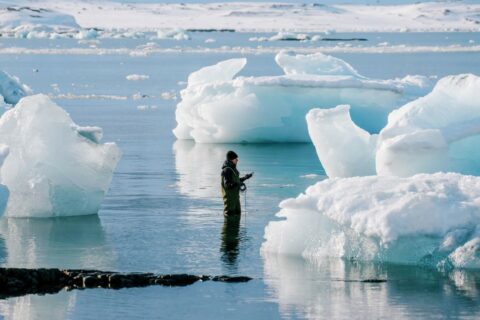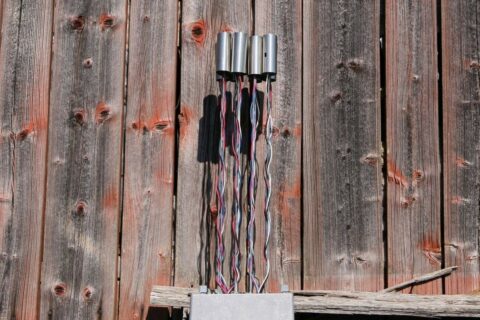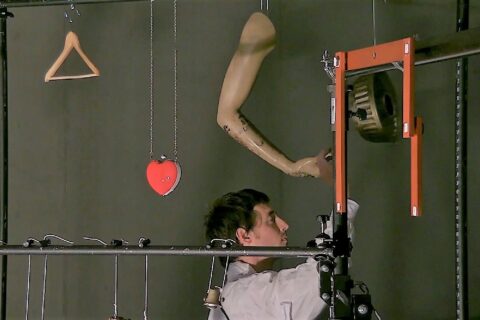Nieto’s new book “A soft hiss of this world”, published and distributed by the German record label Gruenrekorder, is written in collaboration with the anthropologist Tim Ingold and the philosopher Carmen Pardo. It’s based on the research carried out by Nieto in Finland during 2016.
The book talks about the disappearance , such as the loss of language as a result of the absence of certain states and processes that occur naturally in the environment like different states of water, snow and ice. The sound of snow, ice and snowflakes are the core sound material of this research project.
Tim Ingold opens the book by introducing the reader to the main subjects of the research: language, landscape, sound and listening (listening to sounds and silences of the Finnish landscape); Pardo then unfolds how the way in which the gaze and listening of the snow constitutes the experience of a disappearance, of a concentration in the void or nothingness of which “A Soft Hiss of this World” participates (he also questions the kind of listening involved in recording different states of snow, and proposes the exercise of recording as an experience that implies a multiple temporality).
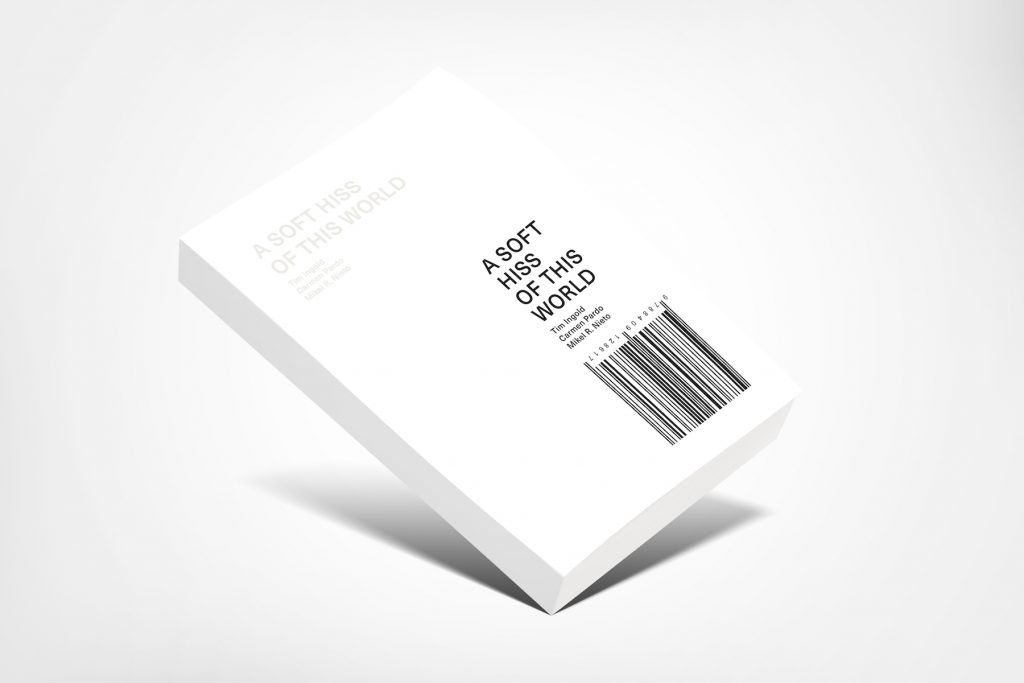
The text by Mikel R. Nieto is divided into four parts: (i)
“This is nothing” contains Nieto’s texts and thoughts about the most important points of the investigation, such as silence, listening, landscape, language, disappearance and absence, archive, hyper-objects and the anthro-pocene; (ii) “Diaries (2009 – 2019)” brings together a selection of photographs and the most outstanding moments throughout the research in a brief direct and poetic format marking the corresponding places and dates; and (iv) the fourth part is the result of silencing each and every word by John Cage in his “Lecture on Nothing,” leaving only the punctuation marks, such as commas, periods, separators and the last sentence of the text of Cage.
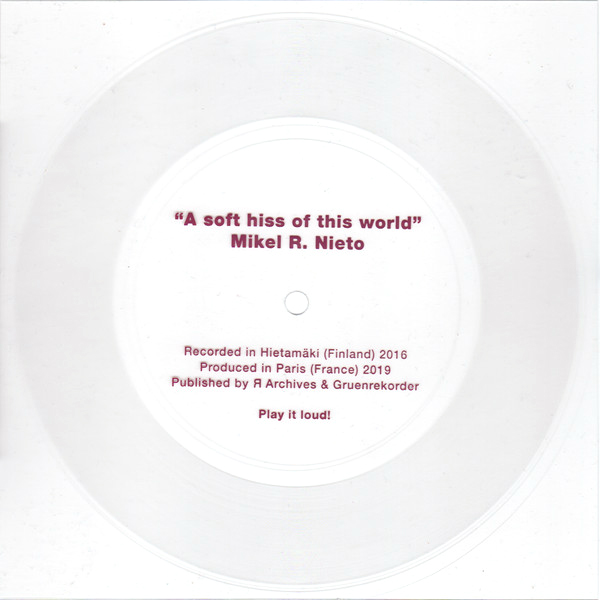
The Recording
The third part of Nieto’s text is a code that reflects the loss of most of the sound recordings made during his research with more than 600 hours of recordings. The code is the only thing that could be recovered from all recordings, except the only sound recording published in physical format as a transparent Flexi-disc, the disc containing a raw recording of snowfakes is annexed to the book.
During two months the sound artist Mikel R. Nieto recorded the sound of the sound of snow, ice and snowfakes in diferent states and several moments. More than 600 hours of sound recordings was collected. During the edition process all of them were lost, what remained, what was recovered is published physically as transparent flexi-disc. Every time the disc will be played, the stylus of the record player will take away the vinyl itself, very slowly, making the sound of the recording disappearing. Each listening destroys the sound.
How will the end of the world sound?
The book project: “A Requiem for our Specie”.
”It is known that in the Arctic, people can see and hear things that are impossible in other places on the planet. These phenomena are caused by special atmospheric conditions and some people in these latitudes have described some sounds that happened at great distances or sounds of extreme delicateness. How much of the landscape resides in our listening?
Humans may face extinction due the climate change. The book presentation aims to make us aware of that process. How will the end of the world sound?
The public presentations of “A soft hiss of this world” is proposing the possibility of listening to an hyper-object, such as climate change, thanks to a simple exercise of listening to ice melting with water from the Antarctica.
The first presentation of the book took place in “La Place” Art Space in Barcelona (Spain) on 19th December 2019, curated by Mayssa Fattouh.
The whole project was made possible with the support of Tabakalera, Kone Foundation, Etxepare, the Spanish embassy in Sweden and EMS Elektronmusikstudion in Stockholm (Sweden) (2016).
Thes publication has been possible thanks to the support of the Basque Government as part of its program of grants forthe encouragement and development of plastic and visual arts, in the publications category (2019).
For more info:
soft.mikelrnieto.net


